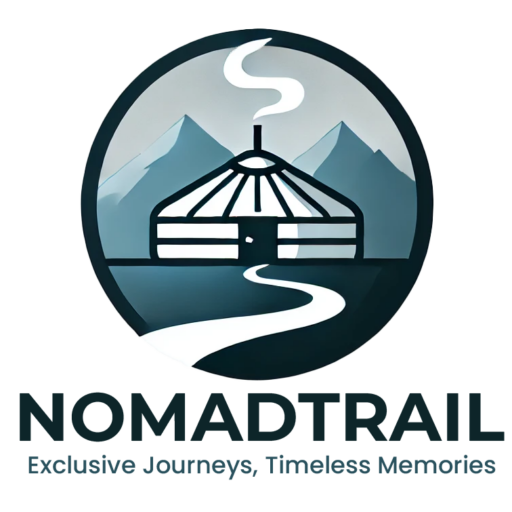The Trans-Mongolian Railway is one of the world’s most legendary rail journeys—connecting Russia, Mongolia, and China in a thrilling route that spans thousands of kilometers, shifting landscapes, and centuries of history.
This Trans-Mongolian Railway guide breaks down everything you need to know: key stops, ticket prices and classes, visa requirements, cultural tips, and how to make the most of this unforgettable trip. Read more on Britannica

The Trans-Mongolian Railway is a southern branch of the famous Trans-Siberian Railway, stretching from Moscow, Russia, through Ulaanbaatar, Mongolia, and ending in Beijing, China. Covering over 7,600 kilometers (4,700+ miles), this route passes through remote forests, vast steppes, deserts, and mountain ranges—making it a top choice for adventurous travelers.
Moscow – Russia’s historic and cultural heart
Yekaterinburg (Russia) – Gateway to the Ural Mountains
Irkutsk (Russia) – Near the stunning Lake Baikal; Border city of Russia and Mongolia
Ulaanbaatar – Capital of Mongolia and hub of nomadic culture
Zamyn-Uud/Erenhot – Border towns of Mongolia and China
Beijing – China’s dynamic capital
Duration: Full journey from Moscow to Beijing through Mongolia takes 6–7 days non-stop, but most travelers break it up into sections with stops.

| Departure | Dep. Date | Arrival | Duration | Ticket Price |
| Ulaanbaatar Intl Train Station | Every Day | Zamyn-Uud (Mongolia) | 15 hours | 44,000 – 133,100 MNT |
| Ulaanbaatar Intl Train Station | Every Thursday 07:18 UB time | Beijing (China) | 31 hours | 328,700 – 532,200 MNT |
| Ulaanbaatar Intl Train Station | Saturdays & Sundays | Irkutsk (Russia) | 25 hours | 436,800 – 666,100 |
Note on Train Ticket Prices:
Train ticket prices in Mongolia vary depending on the train type and cabin class. The prices shown here are accurate as of September 14, 2025, but they may change. For the latest schedules, routes, and online booking options, please visit the official Mongolian Railway website https://eticket.ubtz.mn/
You may also be able to purchase train tickets online one to two months in advance, as the official website makes them available for sale.
You’ll find a mix of local Mongolian/Russian trains and Chinese international trains. All trains generally offer the following classes:
2-berth cabins
Lockable door, sometimes includes private toilet
Ideal for couples or solo travelers wanting privacy
4-berth shared cabins
Most popular with international travelers
Clean and comfortable with shared bathrooms
Open-plan with 50+ bunks
Budget-friendly but crowded and less secure
Tip: Book early in high season (May–September) to secure your preferred class and route.
You will need visas for each country you enter. Plan ahead!
| Country | Visa Required? | Notes |
|---|---|---|
| Russia | Yes (most nationalities) | Apply via Russian consulate or visa center |
| Mongolia | Varies | Some nationalities are visa-exempt for short stays |
| China | Yes | Apply well in advance; strict rules apply |
Border crossings can take 4–6 hours. Immigration and customs happen on the train or at border stations. Be prepared with your passport, printed tickets, and necessary forms.
Most trains have a restaurant car serving simple meals (soups, noodles, dumplings, meats)
Prices are reasonable but the quality can vary
Bring snacks and instant meals, especially if you have dietary restrictions
At major stops, vendors sell fresh food and snacks on the platforms
Local specialties like pirozhki (stuffed pastries) in Russia or khuushuur in Mongolia can be found
Instant noodles, dried fruits, tea/coffee, and a mug
All carriages have hot water samovars for drinks or cup noodles
Travel Pillow & Blanket (some trains provide linens, but not always comfortable)
Slippers or Slide-on Shoes for walking inside the train
Earplugs & Eye Mask (especially in 2nd/3rd class)
Towel & Toiletries – shared bathrooms are basic
Entertainment: Books, downloaded movies, cards
Power Bank – charging outlets are limited or unreliable
Phrasebook or Translation App – English is not widely spoken onboard
| Season | Pros | Cons |
|---|---|---|
| Summer (Jun–Aug) | Warm weather, vibrant landscapes | Busiest season, tickets sell fast |
| Autumn (Sep–Oct) | Fewer tourists, golden scenery | Cooler temps |
| Winter (Nov–Feb) | Dramatic snowy views, less crowded | Very cold, shorter daylight hours |
| Spring (Mar–May) | Mild weather, wildflowers in Mongolia | Occasional sandstorms in Gobi region |
Greet cabin-mates politely and offer to share snacks—small gestures go a long way
Toilets may be locked near border crossings or during station stops—plan ahead
Keep your valuables with you, especially in 2nd or 3rd class
Stay flexible—delays happen, and that’s part of the adventure
Lake Baikal – the world’s deepest freshwater lake
Gobi Desert – endless sand dunes and camel herders
Ulaanbaatar Skyline – Buddhist temples meet modern towers
Great Wall of China (on approach to Beijing)
Prices vary by class and route. A full one-way journey from Moscow to Beijing can cost:
1st class: $800–$1,200
2nd class: $500–$800
3rd class (Russia only): $200–$400
Yes! Most travelers break up the journey and explore places like Irkutsk (Lake Baikal), Ulaanbaatar, or Terelj National Park. Plan your stops in advance—each leg requires separate tickets.
Yes, it’s generally safe, especially in 1st and 2nd class. Still, use common sense: secure valuables and lock your cabin when sleeping or stepping out.
Yes! We can definitely help you purchase train tickets for our clients—either in advance or at the last minute—completely free of charge. Additionally, Nomad Trail Mongolia can customize a tour or adventure for you, including a Trans-Siberian train experience tailored to your interests and travel dates.
If you’re interested, please contact us via email, WhatsApp, or through a direct inquiry on our website.
The Trans-Mongolian Railway is more than a train ride—it’s a once-in-a-lifetime expedition through history, geography, and culture. Whether you’re a solo adventurer or a curious couple, this journey offers a window into the soul of Eurasia like no other.
With the right planning and this Trans-Mongolian Railway guide, you’re set for an unforgettable experience across three of the world’s most captivating countries.

